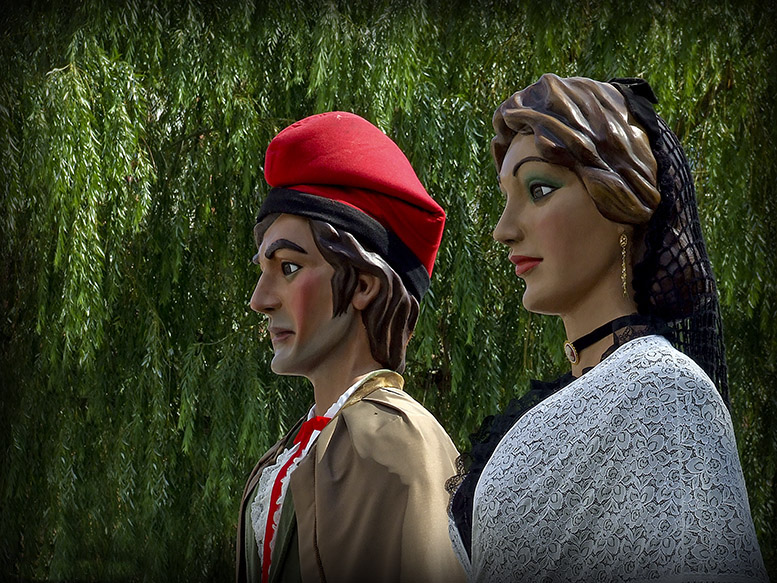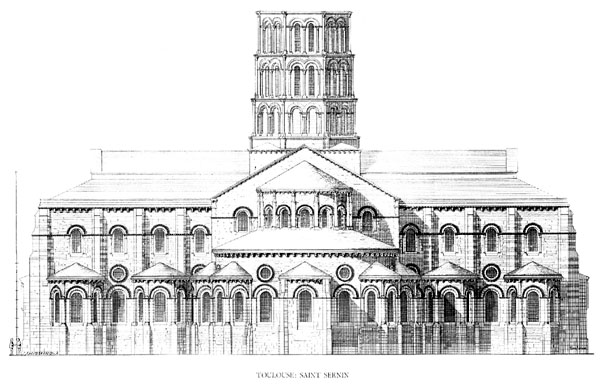|
Santa Maria De Merlès
Santa Maria de Merlès (Officially and in Catalan; es, Santa María de Marlés) is a municipality in Catalonia. It is officially within the comarca of Berguedà, but traditionally, it is a part of the natural comarca of Lluçanès. The municipality is located on the ''riera'', or stream, of Merlès, from which the town takes its name. It is located about 14 kilometers east of Puig-reig, and 8 kilometers west of Prats de Lluçanès, the nearest market town. The town is divided into two parishes, Santa Maria (in the Bishopric of Solsona) to the west of the ''riera'', and Sant Martí (in the Bishopric of Vic) to the east. Although the municipality lies within the natural region of Lluçanès, it voted in 2015 not to join a proposed new comarca of that name, but the plan was put on hold due to insufficient support. Folklore The town was traditionally dominated by two important families, the Cortadas and the Vilaltas. Their monumental houses still stand in the municipality. A popu ... [...More Info...] [...Related Items...] OR: [Wikipedia] [Google] [Baidu] |
Municipalities Of Catalonia
Catalonia is (as of 2018) divided into 947 Municipalities of Spain, municipalities. Each municipality typically represents one significant urban settlement, of any size from village to city, with its surrounding land. This is not always the case, though. Many municipalities have merged as a result of rural depopulation or simply for greater efficiency. Some large urban areas, for example Barcelona, consist of more than one municipality, each of which previously held a separate settlement. The Catalan government encourages mergers of very small municipalities; its "Report on the revision of Catalonia's territorial organisation model" (the ""), published in 2000 but not yet implemented, recommends many such mergers. Larger municipalities may sometimes grant the status of ''minor local entity, decentralised municipal entity'' ( ca, EMD, es, EATIM) to one or more of its settlements, for more effective provision of services or to substitute for its previous status as a separate mun ... [...More Info...] [...Related Items...] OR: [Wikipedia] [Google] [Baidu] |
Puig-reig
Puig-reig () is a municipality and town in the comarca of Berguedà, Catalonia. As of 2009, the town had a population of 4,403. Atop a hill overlooking the Llobregat River, its name means 'royal hill' in old Catalan. The town includes two medieval fortresses, as well as numerous examples of Romanesque and Gothic architecture. Industrial and vernacular architecture can also be found in the numerous industrial colonies and ''masies'', or farm houses, within the limits of the municipality. They are also home to La Polifònica de Puig-reig. History The existence of the town of Puig-reig is first documented in 907, at the consecration of St Martin's Church. Main sights *The Puig-Reig Castle, documented in the year 907 and progressively expanded in the 12th and 13th centuries. * St Martin's Church, a Romanesque church from the 12th century with three murals from the 13th century. *The Merola castle Merola is an Italian surname. Notable people with the surname include: * Gaetano ... [...More Info...] [...Related Items...] OR: [Wikipedia] [Google] [Baidu] |
Gaià
Gaià is a municipality in the province of Barcelona and autonomous community of Catalonia Catalonia (; ca, Catalunya ; Aranese Occitan: ''Catalonha'' ; es, Cataluña ) is an autonomous community of Spain, designated as a '' nationality'' by its Statute of Autonomy. Most of the territory (except the Val d'Aran) lies on the no ..., Spain. The municipality covers an area of and the population in 2014 was 163. References External links * Government data pages Municipalities in Bages {{Barcelona-geo-stub ... [...More Info...] [...Related Items...] OR: [Wikipedia] [Google] [Baidu] |
Avinyó
Avinyó is a Catalan municipality in Spain. It is located in the province of Barcelona Barcelona (, ) is a province of eastern Spain, in the center of the autonomous community of Catalonia. The province is bordered by the provinces of Tarragona, Lleida, and Girona, and by the Mediterranean Sea. Its area is . References External links Government data pages Municipalities in Bages {{Barcelona-geo-stub ... [...More Info...] [...Related Items...] OR: [Wikipedia] [Google] [Baidu] |
Sant Feliu Sasserra
Sant Feliu Sasserra is a municipality in the extreme north-east of the comarca of Bages, in Catalonia. It is also within the natural comarca of Lluçanès. The municipality's name has its origins in several features of the town. It is named ''Sant Feliu'' after a primitive church erected atop a rock named the ''roca d'en Feliu'', or "Felix's Rock". The main road through the municipality, which connected Prats de Lluçanès with Artés in Bages, followed the area's hilly natural contours along a ridge, hence ''Sasserra''. The municipality surrounds an exclave of Oristà. Although the municipality lies within the natural region of Lluçanès, it voted in 2015 not to join a proposed new comarca of that name, but the plan was put on hold due to insufficient support. Sites of interest * The ''Casa del Consell'', in the Gothic style, former seat of the ''sotsvegueria'' of Lluçanès Lluçanès () is a natural region transitioning between the Plain of Vic and Berguedà, in the pr ... [...More Info...] [...Related Items...] OR: [Wikipedia] [Google] [Baidu] |
Oristà
Oristà is a municipality in the ''comarca'' of Osona in Catalonia, Spain. It includes an exclave within Sant Feliu Sasserra. In 2015, the municipality voted to join a proposed new comarca of Lluçanès Lluçanès () is a natural region transitioning between the Plain of Vic and Berguedà, in the pre-Pyrenees. Although not an officially recognized comarca of Catalonia, it has a strong historical, natural and social personality. Corresponding mu ..., but the plan was put on hold due to insufficient support. References * Panareda Clopés, Josep Maria; Rios Calvet, Jaume; Rabella Vives, Josep Maria (1989). ''Guia de Catalunya'', Barcelona: Caixa de Catalunya. (Spanish). (Catalan). External links Government data pages Municipalities in Osona {{Barcelona-geo-stub ... [...More Info...] [...Related Items...] OR: [Wikipedia] [Google] [Baidu] |
Lluçà
Lluçà () is a municipality in the ''comarca'' of Osona in Catalonia, Spain. It is subdivided into the town of , and the much smaller village of Lluçà. This village, prominent because of its monastery, gives its name to the surrounding natural comarca of Lluçanès. In 2015, the municipality voted to join a proposed new comarca of Lluçanès, but the plan was put on hold due to insufficient support. History Lluçà was part of the County of Roussillon area and governed by the Counts of Roussillon during the 6th and 7th centuries. Throughout the end of the 8th century and the middle of the twelfth century, Lluçà was governed by various Counts of Barcelona. Demography Sites of interest *Remains of the Castle of Lluçà * Romanesque hermitage of Sant Vicenç del Castell. A circular building with a hemispherical vault and small apse. Documented since 988, the present structure dates from the 11th and 12th centuries. *Monastery of Santa Maria de Lluçà. A Romanesque church ... [...More Info...] [...Related Items...] OR: [Wikipedia] [Google] [Baidu] |
Baroque Architecture
Baroque architecture is a highly decorative and theatrical style which appeared in Italy in the early 17th century and gradually spread across Europe. It was originally introduced by the Catholic Church, particularly by the Jesuits, as a means to combat the Reformation and the Protestant church with a new architecture that inspired surprise and awe. It reached its peak in the High Baroque (1625–1675), when it was used in churches and palaces in Italy, Spain, Portugal, France, Bavaria and Austria. In the Late Baroque period (1675–1750), it reached as far as Russia and the Spanish and Portuguese colonies in Latin America. About 1730, an even more elaborately decorative variant called Rococo appeared and flourished in Central Europe. Baroque architects took the basic elements of Renaissance architecture, including domes and colonnades, and made them higher, grander, more decorated, and more dramatic. The interior effects were often achieved with the use of '' quadratura ... [...More Info...] [...Related Items...] OR: [Wikipedia] [Google] [Baidu] |
Romanesque Architecture
Romanesque architecture is an architectural style of medieval Europe characterized by semi-circular arches. There is no consensus for the beginning date of the Romanesque style, with proposals ranging from the 6th to the 11th century, this later date being the most commonly held. In the 12th century it developed into the Gothic style, marked by pointed arches. Examples of Romanesque architecture can be found across the continent, making it the first pan-European architectural style since Imperial Roman architecture. The Romanesque style in England and Sicily is traditionally referred to as Norman architecture. Combining features of ancient Roman and Byzantine buildings and other local traditions, Romanesque architecture is known by its massive quality, thick walls, round arches, sturdy pillars, barrel vaults, large towers and decorative arcading. Each building has clearly defined forms, frequently of very regular, symmetrical plan; the overall appearance is one of simpli ... [...More Info...] [...Related Items...] OR: [Wikipedia] [Google] [Baidu] |
Mary Magdalene
Mary Magdalene (sometimes called Mary of Magdala, or simply the Magdalene or the Madeleine) was a woman who, according to the four canonical gospels, traveled with Jesus as one of his followers and was a witness to his crucifixion and resurrection. She is mentioned by name twelve times in the canonical gospels, more than most of the apostles and more than any other woman in the gospels, other than Jesus' family. Mary's epithet ''Magdalene'' may mean that she came from the town of Magdala, a fishing town on the western shore of the Sea of Galilee in Roman Judea. The Gospel of Luke chapter 8 lists Mary Magdalene as one of the women who traveled with Jesus and helped support his ministry "out of their resources", indicating that she was probably wealthy. The same passage also states that seven demons had been driven out of her, a statement which is repeated in Mark 16. In all the four canonical gospels, Mary Magdalene was a witness to the crucifixion of Jesus and, in the Syn ... [...More Info...] [...Related Items...] OR: [Wikipedia] [Google] [Baidu] |
Avui
''Avui'' (, meaning "Today" in English) was a Catalan daily newspaper, based in Barcelona, in Catalonia. It was one of the city's newest papers, having been founded in 1976. The editorial line was Catalan nationalist. History and profile ''Avui'' was first published on 23 April 1976, (Saint George's day, a symbolic holiday in Catalonia). The founding company was Premsa Catalana. The paper initially relied on the subscriptions of thousands of Catalans for financial support. It soon went into financial problems and changed ownership. A partnership of two publishers along with the Catalan national government itself took over in order to avoid imminent bankruptcy. The Grupo Godó owned 40% of the paper, which had its headquarters in Barcelona. The Catalan government subsidises with important amounts those Catalan newspapers with at least one Catalan language edition. In 2008 ''Avui'' was only second to ''El Punt'' in terms of circulation/funds granted, having received almost 1.5 m ... [...More Info...] [...Related Items...] OR: [Wikipedia] [Google] [Baidu] |
El Punt
''El Punt'' (, meaning in English "The Point") was a Catalan daily newspaper based in Girona, Catalonia (Spain). The newspaper was renamed in 1990 from the original ''Punt Diari'' ('Daily Point'). It was published between 24 February 1979 and 31 July 2011. History and profile The newspaper was founded on 24 February 1979. In the beginning the paper was only circulated in the province of Girona, but from 11 September 2004 it became available in the province of Barcelona. By 2008 it had seven editions: Barcelona, Girona, Barcelonès nord, Maresme, Camp de Tarragona- Terres de l'Ebre, Penedès, and Vallès Occidental. On 31 July 2011, the newspaper merged with the newspaper ''Avui'', creating the new newspaper ''El Punt Avui''. ''El Punt'', however, kept an own edition for the Girona area, where the original ''El Punt'' newspaper was born. The Catalan government subsidises with important amounts those Catalan newspapers with at least one Catalan language edition. In 2008, ''E ... [...More Info...] [...Related Items...] OR: [Wikipedia] [Google] [Baidu] |




